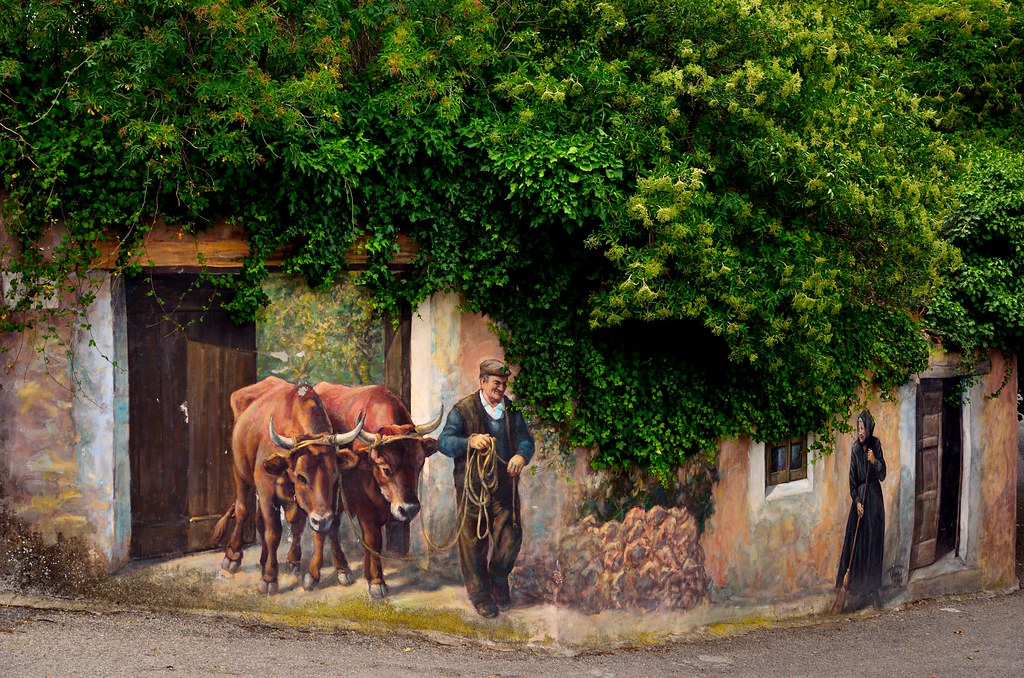Nuoro And The Barbagia County 0 Comments

Nuoro (one hour and a half drive from the Gabbiano Azzurro Hotel & Suites, 122 kilometres far) is the Sardinian culture’s symbol for having given birth to important writers of the island but particularly to the Nobel Prize for literature Grazia Deledda who about Nuoro wrote:
"The inner part of the village has more than medieval primitiveness, with narrow and poorly paved streets, lanes, granite huts with external staircases, courtyards, pergolas, wide-open doors from which black kitchens and poor but picturesque interiors can be glimpsed. Nuoro has a paved main street, churches, cafes, and so on but what may be of interest is the interior of the village, the stone huts, nest or den of intelligent and frugal people, who work and live all year round for barley bread, who believes in God and hates the neighbour for each slightest offence. Odd types cross the streets, together with the villagers with their chariots drawn by oxen and their inseparable horses, and the Egyptian-eyed women, tight in the rich and heavy costume or poorly dressed, with baskets and amphorae on the head. Street vendors circulate; the Barbaricines with horses loaded with potatoes, baskets of asphodels, wooden tools; Oliena’s women with fruit baskets; the leeches seller, who sounds the horn to announce his passage; the trout fisherman; the tinsmith shouting, asking for old copper tools, giving in exchange new ones (a kind of gipsy whose passage, as people say, announces a change of time, from good to bad); a man with a haversack, who is seeking for wheat and barley for a Saint’s feast; a man who plays the drum, announcing a proclamation of the Town Hall or the price of wine or other commodities; and other and other types, and finally the storyteller poet who reduces the most interesting Italian and foreign events in Sardinian verses."
The earliest settlements in the Nuoro area date back to the Nuragic age. In a document of the end of the XI century the name Nugor is found (nowadays the people from Nuoro call Nugoro their city). After the Romans domain, the city passed, like all the rest of Sardinia, under the Byzantines, who governed oppressing with heavy taxes. Subsequently, Nuoro was part of the Giudicato di Torres and later to the one of Arborea. With the advent of the Aragonese (1297) and the Spaniards (1479), Nuoro people suffered an oppressive feudal regime, to which they rebelled with banditry and isolation. When the Piedmontese arrived in 1720, they found Nuoro in poor economic conditions and the rebellions against the Savoy government worsened the situation. Perhaps due to the continuous popular uprisings against power, Nuoro was increasingly isolated and it was only in 1927 that it became the capital of the third Sardinian Province.
Walking today in the historic centre of Nuoro is like taking a journey throughout time, strolling on the cobblestone alleys amid the old stone houses, peering into the courtyards, passing under the arcades leading into the squares. Nuoro was also called "the Sardinian Athens" thanks to those artists, Francesco Ciusa (sculptor) and literary men such as Salvatore and Sebastiano Satta, and, needless to say, Grazia Deledda, who altogether opened Nuoro’s borders to Europe.
Worth visiting are the ancient Church of the Madonna delle Grazie (Nostra Segnora 'e sa Gràssia in Sardinian) of the Seventeenth Century and the more recent Cathedral of Santa Maria della Neve of the Nineteenth Century. The Ciusa Museum, exhibiting the art of Francesco Ciusa’s sculpture, and the Museum of Life and Popular Sardinian Traditions, where the traditional culture is presented to the visitor with clothes, jewellery, masks, textiles, musical instruments, household and work tools.
"It is the heart of Sardinia, the very Sardinia with all its manifestations." (G. Deledda)
--
Written by Daniela Toti
In the photo: a wall in Fonni, province of Nuoro - photo by ©Massimo Frasson
Share your opinion with us!